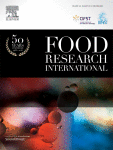|
Autors/es Pérez-Álvarez, E. P.; Ruiz-González, R. |
Abstract Light is an energy source and key environmental factor for plants. Out of the different light wavelengths, blue-light is one of the most relevant spectral regions because of its relation to anthocyanins biosynthesis. Among the compounds present in grapes, anthocyanins determine their main organoleptic and healthy properties; while a minimum concentration of ammonium and amino acids is necessary for a desirable development of the alcoholic fermentation. Moreover, amino acids are precursors of several volatile compounds synthetized during the fermentation. The aim of this study was to assess the influence of riboflavin (vitamin B2) applications, at harvest and one week later,to grapevine leaves in combination with post-harvest blue-light irradiation on Tempranillo (Vitis vinifera L.) grape anthocyanins and amino acidscomposition. The combination of blue-light irradiation and two riboflavin doses as well as theseindividual factors affected both grape anthocyanins and amino acidsconcentrations. After one week of storage, anthocyanins concentration diminished when clusters were irradiated with blue-light; while for amino acids content, the trend to increase or decrease is dependent on the riboflavin dose applied in vines and the storage time. |
Altmetrics
|
|
Publicació Food Research International, 2019, vol. 122, p. 479-486 |
||
|
Data de publicació 2019-05-06 |
||
|
DOI |



